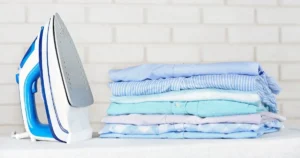Steam Pressing vs. Traditional Ironing: A Comprehensive Guide for Dubai Residents
Welcome to the bustling city of Dubai, where style and sophistication reign supreme. In a land where appearances matter, the quest for a wrinkle-free look is never-ending. Are you torn between the age-old tradition of ironing and the modern marvel of steam pressing? Fear not, for we are about to embark on a journey through the sands of time to uncover which method holds the crown in Dubai’s garment care scene.
Steam Pressing
In a city that embraces innovation, steam pressing emerges as a frontrunner in the garment care revolution. Harnessing the power of steam, this method offers a gentle yet effective approach to banishing wrinkles and creases. Picture-perfect results are achieved with minimal effort, making steam pressing a favourite among busy Dubai residents.
When it comes to wrinkle removal, steam pressing proves its mettle by effortlessly smoothing out even the most stubborn creases. Whether you’re dealing with delicate fabrics like silk or rugged materials such as denim, a steam iron can tackle the task with finesse. The steam penetrates deep into the fabric fibres, relaxing them and leaving your garments looking fresh and wrinkle-free.
Pros:
- Efficient wrinkle removal without excessive heat.
- Suitable for delicate fabrics, such as silk and chiffon.
- Saves time and energy compared to traditional ironing.
- Leaves garments with a professional finish, ideal for formal attire.
Cons:
- Initial investment in a steam press machine may be required.
- Not suitable for all fabric types, particularly those prone to water spotting.
- Limited portability compared to traditional irons.
- Requires adequate space for storage and operation.
Traditional Ironing
While steam pressing may be the new kid on the block, traditional ironing boasts a rich heritage steeped in tradition. For many, the rhythmic glide of a trusty iron is a therapeutic ritual, offering a sense of satisfaction unmatched by modern contraptions. In Dubai’s cultural tapestry, traditional ironing holds its own, catering to those who cherish timeless techniques.
The dry iron, a staple in households for generations, continues to hold its ground in the battle against wrinkles. With precise temperature control and a smooth gliding soleplate, a dry iron can achieve crisp, professional results on a wide range of fabrics. From dress shirts to delicate linens, the dry iron remains a reliable ally in the quest for sartorial perfection.
Pros:
- Widely accessible and familiar method of garment care.
- Offers precise control over temperature and pressure.
- Versatile enough to handle a wide range of fabrics and garment types.
- Can be easily transported for on-the-go touch-ups.
Cons:
- Prone to causing shine or scorch marks on delicate fabrics.
- Requires more time and effort compared to steam pressing.
- May result in fatigue or discomfort with prolonged use.
- Less forgiving for beginners, with a higher risk of accidental damage to garments.
Conclusion:
In the epic showdown between steam pressing and traditional ironing, there is no clear victor. Each method possesses its own set of strengths and weaknesses, catering to the diverse needs and preferences of Dubai’s fashion-conscious populace. Whether you opt for the modern convenience of steam pressing or the timeless allure of traditional ironing, the key lies in choosing the method that best suits your garments and lifestyle.
However, if you’re leaning towards the ease and efficiency of steam pressing, look no further than Wash House’s premier steam press services. With our state-of-the-art equipment and expert technicians, we guarantee flawless results that will elevate your wardrobe to new heights of perfection. Say goodbye to stubborn wrinkles and hello to immaculately pressed garments that exude sophistication and style.
So, the next time you find yourself faced with a mountain of wrinkled laundry, remember that Wash House is here to transform your wardrobe with the power of steam. Trust us to handle your garments with the care and precision they deserve, leaving you free to embrace life’s adventures with confidence and flair.
FAQ’s: Steam Pressing vs. Traditional Ironing
Q1: Is steam pressing suitable for all types of fabrics?
While steam pressing is generally safe for a wide range of fabrics, some delicate materials may require special care. It’s always best to check the garment’s care label or consult with a professional if you’re unsure.
Q2: How long does it take to steam press a typical load of laundry?
The time required for steam pressing can vary depending on factors such as the number of garments, their fabric types, and the level of wrinkles. However, on average, steam pressing tends to be faster than traditional ironing, saving you valuable time and effort.
Q3: Can steam pressing remove stubborn wrinkles from heavy fabrics like denim?
Yes, steam pressing is highly effective at removing wrinkles from heavy fabrics like denim. The combination of steam and pressure penetrates deep into the fabric fibres, leaving even the toughest wrinkles smooth and crease-free.
Q4: Is it necessary to use distilled water in a steam press machine?
While distilled water is recommended to prevent mineral buildup and prolong the life of your steam press machine, tap water can also be used in a pinch. Just be aware that using tap water may require more frequent cleaning and maintenance.
Q5: Can I steam press delicate garments like silk or satin without damaging them?
Yes, steam pressing is gentle enough to use on delicate fabrics like silk or satin. However, it’s essential to adjust the temperature and steam settings accordingly and to use a pressing cloth to protect the fabric from direct contact with the steam plate. If you’re unsure, it’s always best to test a small, inconspicuous area first or seek professional advice.
Q6: Which method is more energy-efficient, steam pressing or traditional ironing?
Traditional ironing generally uses less energy than steam pressing, as it does not require steam generation. However, steam pressing may save time, which could offset its higher energy usage.

